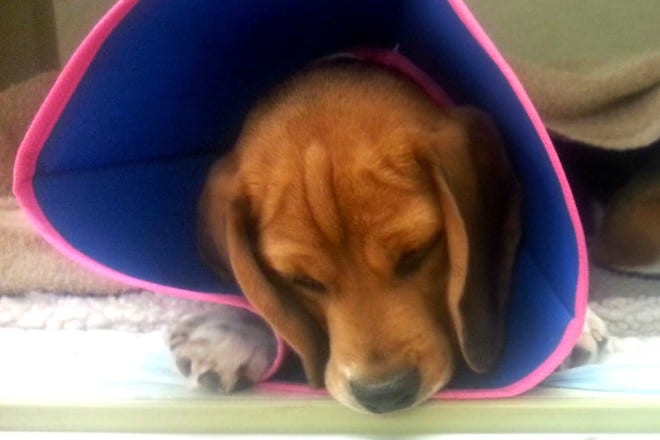We get so many questions about neutering and spaying that we’ve decided to focus on this over the next couple months. We’ll cover the basics and important topics like when and why to neuter, how neutering will affect your furry friend, and how to care for your pet following the procedure. Through our four part series on neutering and spaying, you’ll get all the information you need to make the best decision for your pet.
So what is neutering? Well, neutering is done to stop your pet from reproducing. The process of neutering is surgical removal of the reproductive organs. The word “neutering” is used most often for male pets, but it’s actually a general term that covers both male and female animals. Neutering a female pet is called “spaying” and “castrating” is the technical term used for males.
The procedures are a bit different for males and females, and we always take care to treat your pet based on what it needs, as no two patients are the same. The procedures might be different, but there are certain things you get that are above and beyond what a typical vet might offer for a neutering procedure. When you bring your pet to The Vet House, you know it’s in good hands. Each of our procedures gives you the best care possible without nickel and diming you folks to death. We have a thorough pre-surgical examination and patient monitoring during and after the procedure so that you don’t have to worry about your furry friend or any issues that might come up. You can find more information on what all our neutering procedures include on our Neuter and Spay service page.
Cat and Dog Spaying
The Vet House Doctors do a full “ovariohysterectomy”, where both the uterus and ovaries are all removed. Before we perform the surgery on your female pet, she’ll be given a full physical exam, pre-anesthetic blood work, pre-operative pain medication, state of the art general anesthesia, and some post-operative pain medication so that she feels comfortable after she wakes up. She’ll be positioned on her back with her belly exposed, which will be shaved and aseptically prepped/cleaned to make it easier for the vet to perform the spaying procedure. A small incision is made on the lower part of the abdomen, which will vary in size depending on the size of your pet. After the incision is made, the muscles and internal organs are moved to locate the ovaries. In both cats and dogs, the ovaries are found close to the spine, so their other organs are over top of them when your pet is on her back. For a typical spay surgery, the ovaries and uterus tied off and then removed using a scalpel to cut them free from the surrounding tissue. In dogs, unlike cats, the ovaries are held more firmly in place with tight bands of ligaments. Getting the ovaries free involves a breaking of the ligaments, which can be difficult, especially in bigger dogs. This might sound scary, but our vets are experts in performing this procedure safely for the best results. Once the ovaries and uterus are removed, the incision is closed with sutures. This is all done while she’s being expertly monitored by a doctor and surgical technicians.
Cat and Dog Neutering (Castrating)
Neutering a male pet involves removal of the testicles and any spermatic ducts. Just like the female procedure, your male cat or dog will be given anesthesia and pain medication and positioned on their back. Preparing a male cat for this procedure is a bit different because cats have more sensitive skin in the area than dogs. For your feline friend, one or two incisions can be made, usually just large enough to slide the testes through. These incisions are generally left to close without sutures. For your canine friend, a larger incision is usually made, and the testes are pushed up to be removed. These incisions are usually closed with sutures.
With any surgery, your pet will need some time and extra care to ensure they are healing properly. We provide you with all the information you need to take care of your pet at home after their surgery, and we are always here to answer questions or give you post-op support. You might find yourself wondering if and when you should neuter your pet. We’ve got you covered in our next blog post! Stay tuned for Part Two: Why you should neuter your pet and when to do it.

Leave a Reply